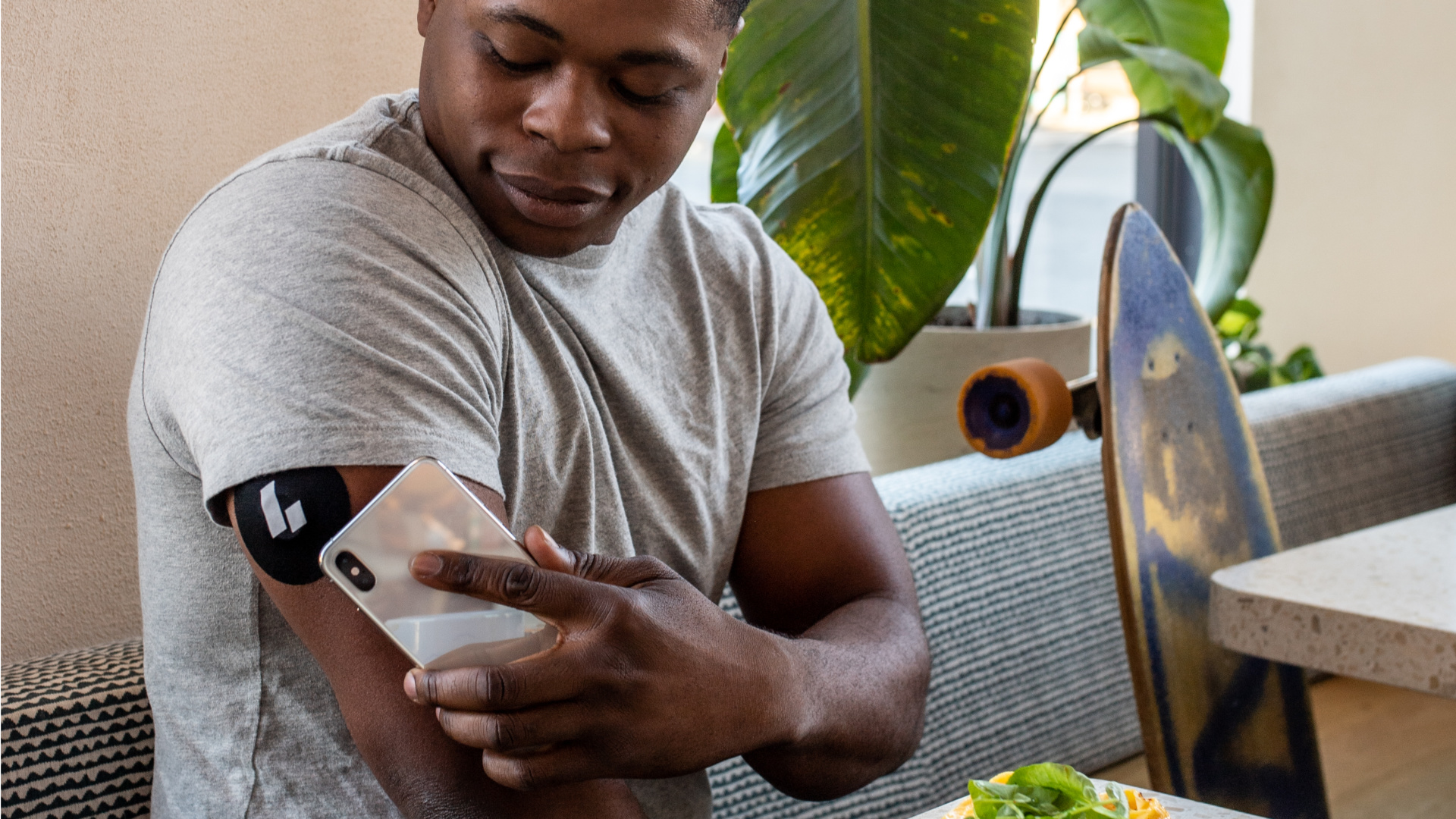Can a continuous glucose monitor help you make better food choices? I tried Levels for a month to find out.
I'll avoid breakfast cereals going forward.


I've always been interested in metabolic health and how food affects our performance, both physical and mental. This got me into fitness, actually; I remember reading about the cognitive benefits of intermittent fasting and how it could also help longevity. I always wished I could monitor my metabolism more closely, though, to take the guesswork out of dieting.
Thanks to the advent of continuous glucose monitoring systems such as Levels, now everyone can do just that. By applying a sensor on your upper arm – a quick and painless process – you can see how food affects your glucose (blood sugar) levels. And it's not just an estimation or an average; you get real-time data, 24/7, as long as you wear the sensor.
But let's wind back a little. What's Levels, and especially continuous glucose monitoring (CGM)? CGM works through a "tiny sensor inserted under your skin, usually on your belly or arm," the methodology is explained at the National Institute of Diabetes and Digestive and Kidney Diseases website, "The sensor measures your interstitial glucose level, which is the glucose found in the fluid between the cells. The sensor tests glucose every few minutes. A transmitter wirelessly sends the information to a monitor."
CGM historically has been used by diabetics – understandably – but since it can help adjust anyone's diet, the fitness industry cottoned on to the idea and now offers its packaged deals to athletes obsessed with fine-tuning their diets via CGM. Levels takes the concept even further by promising anyone tangible metabolic benefits, not just sportspeople but anyone interested in improving their metabolic health.

Say no to chocolate and yes to cauliflower
All you need to do is stick a CGM on your upper arm, connect the Levels app to your CGM app – the sensor is supplied by a company called Abbot – and wait for the insights to pour in. "The Levels app provides real-time feedback on how diet and lifestyle choices impact your metabolic health based on continuous glucose monitor (CGM) data," says Levels. And indeed, you can see the effect of food items and exercise on your blood sugar levels quite clearly.
Of course, knowing is only half the battle, and if you want to improve your metabolism, you have to log food and exercise in the app almost continuously. Well, that might be a bit of a stretch, but for the Levels system to work, you need to tell the app what spiked your blood sugar, whether it's a run or a breakfast consisting of white bread and jam.
At first, I found this exciting. I haven't realised how everyday food items spike my blood sugar; cereal, in particular, was the worst offender. Spiking my glucose levels with other meals also resulted in me experiencing the 'dawn effect', which is the elevation of glucose just after you wake up, before having any food or drink.
Get all the latest news, reviews, deals and buying guides on gorgeous tech, home and active products from the T3 experts
After two days or so, I started adjusting my diet to see if I can avoid having quite as many spikes. And surely so, not having bread with my breakfast helped my blood sugar stay even. Going for a walk after a meal was also beneficial; this is something the Levels app recommended to me. Within a week, my glucose only spiked when I went for a run (strenuous exercise spikes blood sugar, but in a good way, apparently).

Fancy logging everyting you eat? You're in for a treat...
After the initial success – 'diet honeymoon' as I like to call it – admittedly, my motivation started to falter. The Levels app does a fine job of keeping you going by giving you a Stability Score (my highest score for a full day was 80 out of 100), tips and even recipes for 'non-spiky' foods. But logging food in the app is anything but convenient, as you need to add all food items individually, which, if you have more than just, let's say, an apple, can become cumbersome.
In theory, this helps you be more granular with your diet, but unless you're really, really interested in it, logging everything will be anything but inspiring. It'll be a chore, a dreaded thing you must do just to understand why your blood sugar spiked at 3 pm again, despite not having any food or exercise at that time.
This is where the Levels' approach is a bit confusing. Initially, I thought their goal was to make CGM data more accessible to people; but after using the system, I feel it's still very much aimed at athletes who love tinkering with their diet. A 50-something person who works in finance – someone who can afford Levels– won't have the drive and energy to log everything so meticulously. At least, I don't think so.
Speaking of costs, my favourite thing was when Levels recommended a healthy brownie recipe, which obviously had a bunch of ingredients I'd never heard of. To see how much it would cost to make the brownie, I went to Amazon and added all the ingredients to my basket, which was over £30 (approx. $37). And that's just one meal!

Exercise can help you manage blood sugar
All that said, I have no regrets about trying Levels. The insights were helpful, and I liked seeing the rise and fall in glucose levels during the day. I would have appreciated an even more user-friendly app, one that helps log events more quickly (the Levels app can be connected to third-party apps such as Google Fit, which helps log exercises), but I also appreciate it's only in beta right now (in the UK).
I have two takeaways from using Levels for a month. Firstly, our carbohydrate-heavy Western diet is terrible. No matter what staple food you prefer, it'll most likely spike your blood sugar. Breakfast foods are the worst, but most other meals during the day are equally as bad. Let's not even start a discussion on desserts and snacks; they should be avoided at all costs.
Secondly, I feel tremendous sympathy for people with diabetes and those who struggle with their weight. Having a naughty snack now and then was okay for me, as all I risked was a spike in blood sugar, which my healthy body was more than capable of handling. But I can imagine this decision looks much different to people with blood sugar issues. I assume the temptation is still there, but they simply can't afford those spikes, which must be excruciating to manage on a daily basis.

You can't outrun a bad diet
Of course, Levels isn't about people with diabetes, but it helped me put their struggles in perspective. Even if you aren't diabetic, you can benefit from making better food choices, and Levels can help you understand how each food item affects your metabolism, which is different from mine and from everybody else. As long as you're happy to log your food intake and exercise almost religiously.
Levels is available in the US and is coming to the UK later this year (currently in beta). To find out more about how Levels can help you improve metabolic health, head over to Levels today. You can also join the UK waitlist here. To get more information about all things metabolic health, check out Levels' blog.

Matt Kollat is a journalist and content creator who works for T3.com and its magazine counterpart as an Active Editor. His areas of expertise include wearables, drones, fitness equipment, nutrition and outdoor gear. He joined T3 in 2019. His byline appears in several publications, including Techradar and Fit&Well, and more. Matt also collaborated with other content creators (e.g. Garage Gym Reviews) and judged many awards, such as the European Specialist Sports Nutrition Alliance's ESSNawards. When he isn't working out, running or cycling, you'll find him roaming the countryside and trying out new podcasting and content creation equipment.